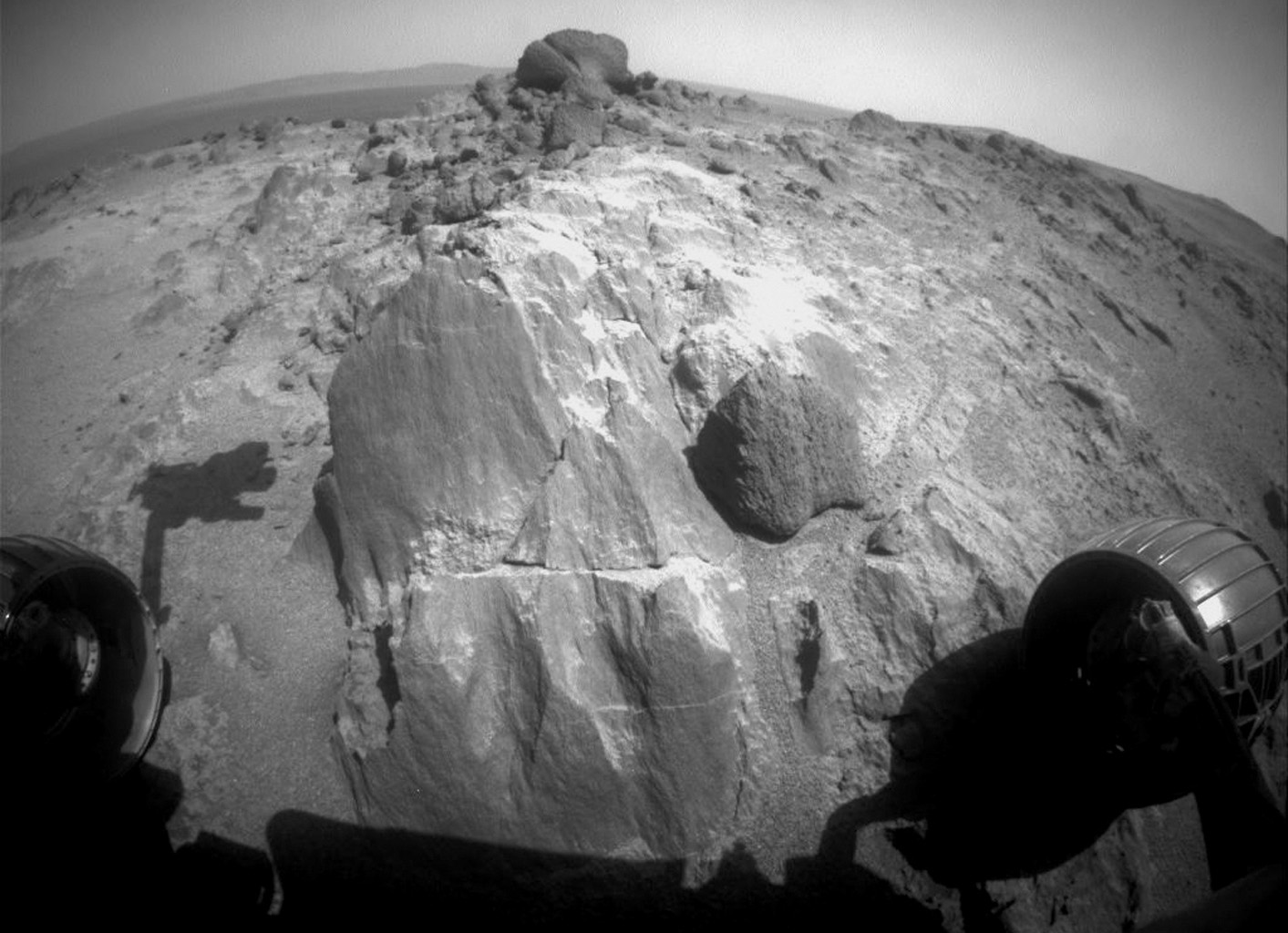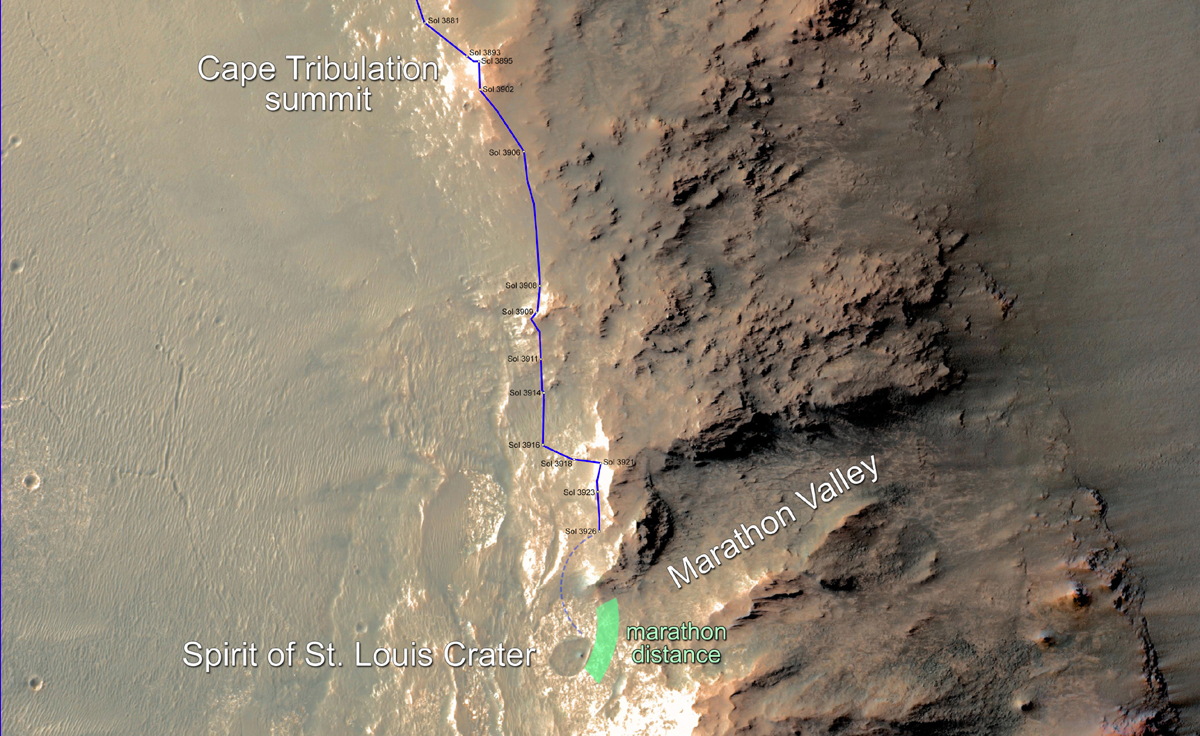
NASA's Opportunity Mars rover is taking a break in the home stretch of its Red Planet marathon to study some rocks the likes of which it's never seen before.
The intriguing rocks lie atop a hill overlooking a site dubbed Marathon Valley — so named because Opportunity will have traveled the marathon distance of 26.2 miles (42.195 kilometers) on Mars by the time it gets there. As of Thursday (March 5), the rover's odometer read 26.139 miles (42.067 km), leaving it just 140 yards (128 meters) short of the milestone.
"We drove to the edge of a plateau to look down in the valley, and we found these big, dark-gray blocks along the ridgeline," Opportunity Project Scientist Matt Golombek, of NASA's Jet Propulsion Laboratory in Pasadena, California, said in a statement. "We checked one and found its composition is different from any ever measured before on Mars. So, whoa! Let's study these more before moving on." [Opportunity's Latest Mars Photos]
The examined rock is rich in silicon and aluminum, and its composition is different than anything observed by Opportunity or its twin, Spirit, on the Red Planet, NASA officials said.
Spirit and Opportunity landed a few weeks apart in January 2004 to search for signs of past water activity on Mars. The golf-cart-size rovers found plenty of such evidence, helping reshape researchers' understanding of the Red Planet and its history.

Spirit and Opportunity are also famed for their longevity. Their nominal missions were set at just three months, but Spirit kept exploring Mars until 2010. Opportunity, of course, is still chugging along today, though the rover is showing some signs of its advanced age.
For example, Opportunity's robotic arm has long been a bit arthritic, and the rover recently began experiencing problems with its flash memory, the kind that can store information when the power is off. Indeed, Opportunity's handlers have operated the rover in a mode that avoids using its flash memory since late last year.
Get the Space.com Newsletter
Breaking space news, the latest updates on rocket launches, skywatching events and more!
Engineers have uploaded new flight software intended to fix the issue, but Opportunity's memory will have to be reformatted before the rover can resume using its flash memory.
"After reformatting, the operations team will avoid use of the rover's arm for several days to make sure the flash file system is fixed and no longer causes resets," NASA officials said. "A reset during the use of the rover's arm would require a complex recovery effort."
Opportunity holds the record for greatest distance traveled on the surface of another world. Second place belongs to the Soviet Union's Lunokhod 2 lunar rover, which covered 24.2 miles (39 km) on the moon in 1973.
Follow Mike Wall on Twitter @michaeldwall and Google+. Follow us @Spacedotcom, Facebook or Google+. Originally published on Space.com.
Join our Space Forums to keep talking space on the latest missions, night sky and more! And if you have a news tip, correction or comment, let us know at: community@space.com.

Michael Wall is a Senior Space Writer with Space.com and joined the team in 2010. He primarily covers exoplanets, spaceflight and military space, but has been known to dabble in the space art beat. His book about the search for alien life, "Out There," was published on Nov. 13, 2018. Before becoming a science writer, Michael worked as a herpetologist and wildlife biologist. He has a Ph.D. in evolutionary biology from the University of Sydney, Australia, a bachelor's degree from the University of Arizona, and a graduate certificate in science writing from the University of California, Santa Cruz. To find out what his latest project is, you can follow Michael on Twitter.









